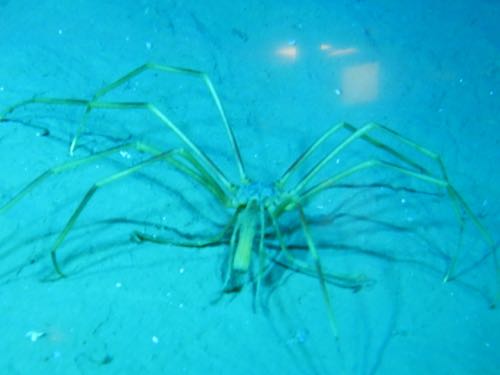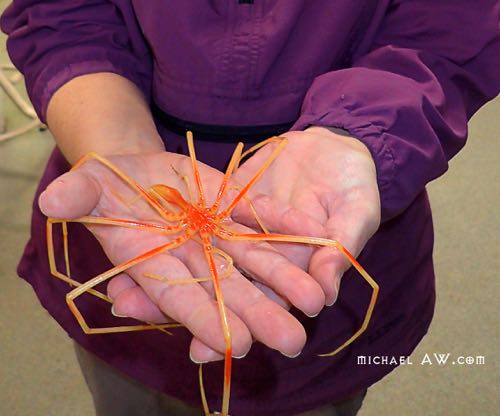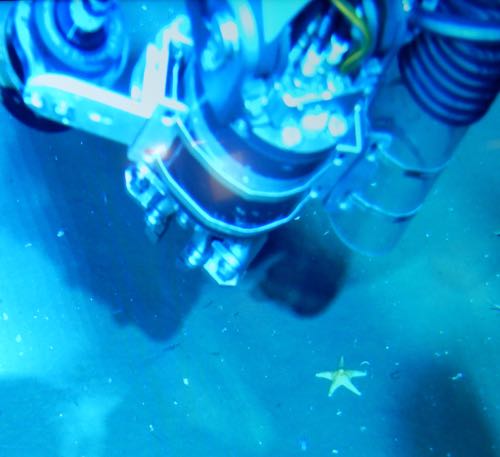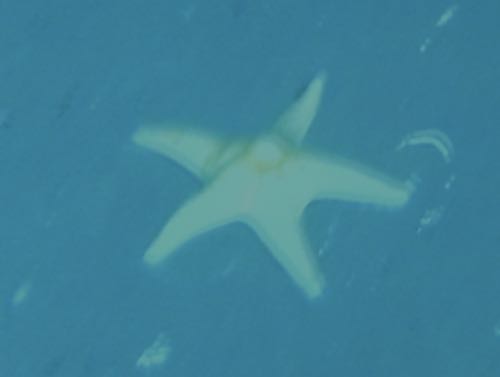When it is a sea spider, of course. Yesterday's benthic ROV dive produced a beautiful array of animals both on the screen and in the collection canisters. One of the highlights were multiple sea spiders (Phylum Arthropoda, Subphylum Chelicerata, Class Pycnogonida). Interestingly, the guts of sea spiders extend out to the ends of the claws, and males carry the eggs. Normally quite small, sea spiders in the Arctic and Antarctic can be much larger than in warmer waters. In the photos below, notice the very large proboscis that is used to suck up food, including sea anemones. It can be difficult to gauge size of organisms based solely upon their appearance in the video feed shown on the television. As you can see in photos of me holding one of the sea spiders, the specimens collected cover my hand.


Here is an image of the ROV collecting arm in action. The arm has a vacuum apparatus as well as a pincer-like claw.


Question of the Day
Question: What does the term "arthropod" mean?


Comments